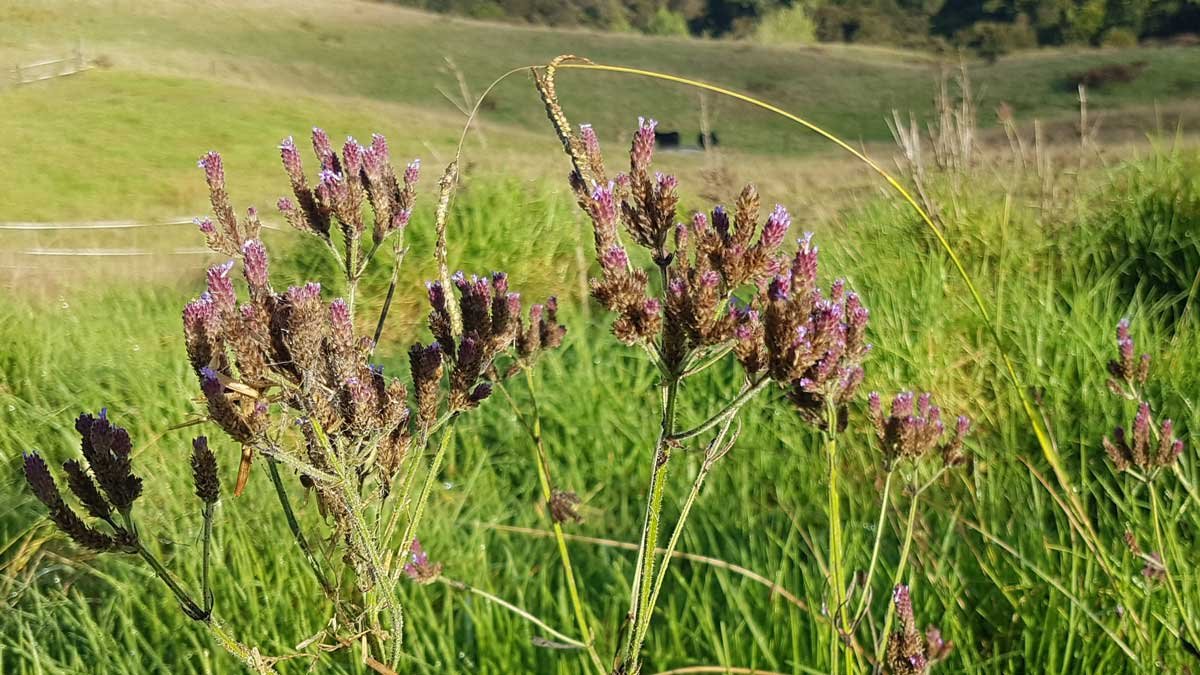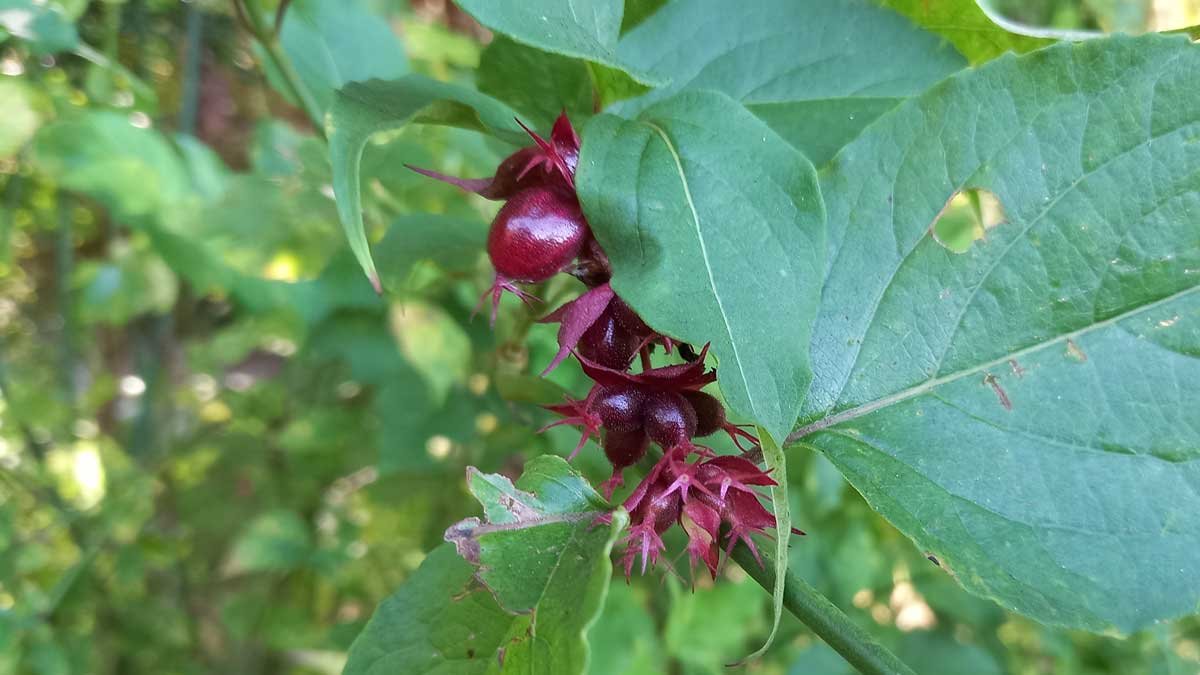Beauty is in the eye of the beholder. One of our toughest and most prolific weeds here at The Outpost is also the most beautiful. Each year in late winter, our bushline lights up in pink blossoms from the many, many Taiwan cherry trees growing in there. It’s a stunning – and heartsinking – display.
It’s heartsinking because the cherry trees are not strictly supposed to be growing in our bush. They’re an introduced species that love our climate and grow freely from seed. They provide food for the native birds that share this place with us. But after eating and digesting the fruit, the seed is pooped into the bush where it begins growing. It grows fast, soon taking over the canopy – making it tougher for native plants to establish. The slow-growing, fussy natives are simply out-competed by the cherries.
But it is also beautiful. The canopy of the bush lighting up with pink for a few weeks of the year. There’s something about the weeds of this place that pull me in two different directions. On one hand, I want to kill and eliminate them. On the other, I appreciate the diversity, beauty, and contributions they make to the property.
Purple-top vervain (Verbena bonariensis)
A few months ago, I was shocked to find this plant selling for $12.50 in a pot at the garden center I work for. I was shocked because at my place, it’s a weed.

It’s a weed I don’t mind, however. It’s not running rampant – it just pops up here and there. The cows don’t tend to eat it, and it’s not toxic if they did. It’s purple flowers add a splash of colour around the place, and I can see why this is a popular bedding plant in cottage gardens. But here, it’s a weed. I don’t plant it, I don’t care for it, I don’t manage it in any way. It just is.
Pampas grass (Cortaderia selloana)
Pampas grass is really easily confused with the native toetoe (Austroderia spp.). They look really similar, but if you want to easily identify which is which, the major difference is that when tugged, the leaves of pampas grass will break off. Toetoe will not.

Pampas seeds prolifically through wind distribution and is found throughout the subdivision – particularly on the edges of bush and along our driveway. We try to control it by grubbing it out of the soil, but it’s really hard work and until they begin flowering, it can be difficult to even distinguish from the grass around it.
But it’s also beautiful. The big bushy heads flower in shades of white and purple. They’re flowering now and it turns out that while I think control is important, I also enjoy looking at them.
Himalayan honeysuckle (Leycesteria formosa)
Common in our smaller bush block, Himalayan honeysuckle dies down in the winter and springs into massive plants over summer.

Like most honeysuckles, it has a very attractive flower and berry. But it can really take over when it wants to. Despite re-starting its growth each season, it can get truly ginormous and out-competes the natives. In the right place, this could be a wonderful plant – however it rarely chooses the right place.
For now, I’m not very good at controlling this one. Mostly because our weed control effort inside the bush is still minimal. I think it’s best to hit it in the spring when it’s just starting to come back up again.
Foxglove (Digitalis purpurea)
This is a plant that is super-common as a garden flower. It’s also poisonous – or therapeutic, depending on dose. Foxglove is the source of the medicine digoxin, which is used for controlling heart health. However, if you were to brew a cup of foxglove tea, or eat a foxglove salad, you would most likely soon suffer a heart attack and die. From Wikipedia:

In other words, at precisely the right dosage, Digitalis toxin can cause the heart to beat more strongly. However, digitoxin, digoxin and several other cardiac glycosides, such as ouabain, are known to have steep dose-response curves, i.e., minute increases in the dosage of these drugs can make the difference between an ineffective dose and a fatal one.
Symptoms of Digitalis poisoning include a low pulse rate, nausea, vomiting, and uncoordinated contractions of different parts of the heart, leading to cardiac arrest and finally death.
Digitalis purpurea via Wikipedia
Foxglove grows throughout our bush. I tend to control it on the paddocks as a small dose of the same poison we use on the gorse will knock it back. But in the bush, it’s not really hurting anything, and it’s a common garden plant for a reason: it’s visually stunning.
Our wild foxglove is purple. In Year 1, it’s a rosette that looks a lot like comfrey. In Year 2, it sends up magnificent purple flower stalks that can contain thousands of seeds. Then it dies, and the next generation takes over.
We gone out and and cut off flowerheads to reduce the seeds – we drop these off with other unwanted green waste. But mostly I just enjoy them.
Ideologies
Part of my university degree included English and media studies papers. Despite this, I went the full 3 years of my undergraduate degree never quite wrapping my head around the concept of ‘ideology’. Nothing made sense until I moved here and began thinking about weeds.
People have different ideas about the right way to control weeds. Some think spraying chemicals is the only way and will openly mock or argue with those who disagree. Others will spend their every waking moment cutting, mulching, and grubbing to remove them organically. Many (maybe most) will not see or care about the status of the plant as a ‘weed’, they will instead notice its beauty, unaware that it happens to be in the wrong place.
I fall somewhere in the middle. Some weeds are tough, prolific, and actively horrible in some way. I will poison those weeds, choosing my methods carefully: stump treatment is preferable to spray, for example. I also research which chemical to use and use it at the recommended levels. But where organic controls are effective, I’ll always choose that route first, even if it’s more physically taxing.
Where there is no active malice in a plant (it’s not poisonous, dangerous, and it’s population is sparse), I will simply leave it. Weeds are just a plant existing in the wrong place. What is a hideous pest to one person may be a plant worth paying good money for to another.
It all comes down to your ideology, and I like to stand back from the ‘politics’ of the issue and consider the practicalities – what’s best for the balance of things? I prefer to admire beauty when I see it, and prioritise my time to work on the stuff that matters the most to me.


